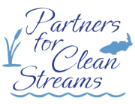Past Successes
PCS and the Maumee RAP
PCS in its current form and under its former identity as the Maumee Regional Action Plan (RAP) Committee has been a part successful conservation and restoration projects for many years. This work has included watershed-wide plans, work with agriculture leaders and landowners to implement conservation practices, creating a sequel to an iconic 1960s Maumee River documentary (Fate of a River), and funding one of the most successful environmental awareness campaigns ever in Northwest Ohio (Give Water a Hand).
Ottawa Hills River Stewardship (2018-2020)

In 2018, the Village of Ottawa Hills, with assistance from The Nature Conservancy, published a 10-year environmental strategic plan for the Village (Envisioning a Greener Future). This plan was crafted after a group of concerned citizens came together to determine ways that the Village could improve the condition of the Ottawa River (and its watershed) as it runs through the Village. The four major components of the plan were community environmental engagement, Ottawa River watershed conservation, river ecosystem health and water quality, and floodplain health. A suite of initiatives and activities to address each component were determined by a resident-led Environmental Task Force. Partners for Clean Streams and The Nature Conservancy were involved in several stages of this work between 2018-2020, and helped to encourage and facilitate many of the associated activities.
Learn more
Partnership Highlights:
- Community Rain Barrel Workshops & Sales
- Student-led Storm Drain Marking Efforts
- Stream Cleanups along the Ottawa River
- Ottawa River Floodplain Restoration Projects
- Ottawa River Watershed Conservation Collaboration (Inaugural Meeting)
- Stewardship Education Through Community Newsletter & Fact Sheet Distribution
Village Newsletter Articles on Watershed Stewardship:
- Village Newsletter Summer Series (May-September 2020)
- Recommended Pool Dewatering Practices Fact Sheet (September 2019)
Youth Patch Program (2002-2019)

For seventeen years between 2002–2019, the annual Patch Day Workshop, was a time for Boy Scouts, Girl Scouts and other groups in 2nd through 5th grade to earn the blue and white embroidered ‘Partnering for Clean Streams’ patch by participating in various water-related activities. Water quality professionals from around Northwest Ohio led activities that taught youth the importance of water in daily life. Adults and youth alike were introduced to the role of stormwater in our local water system, the importance of storm drain stewardship, waterway pollution issues, and ways to conserve and protect our shared water resources.
Learn more
The program was put on hold as an in-person, one day workshop in 2020 but is still woven through many of the other programs and activities we do throughout the year. Our ongoing stewardship programs are excellent opportunities for youth engagement, and for those Scouts looking to fulfill various requirements or volunteering.
Patch Day Resources:
Maumee Corps (2012-2015)
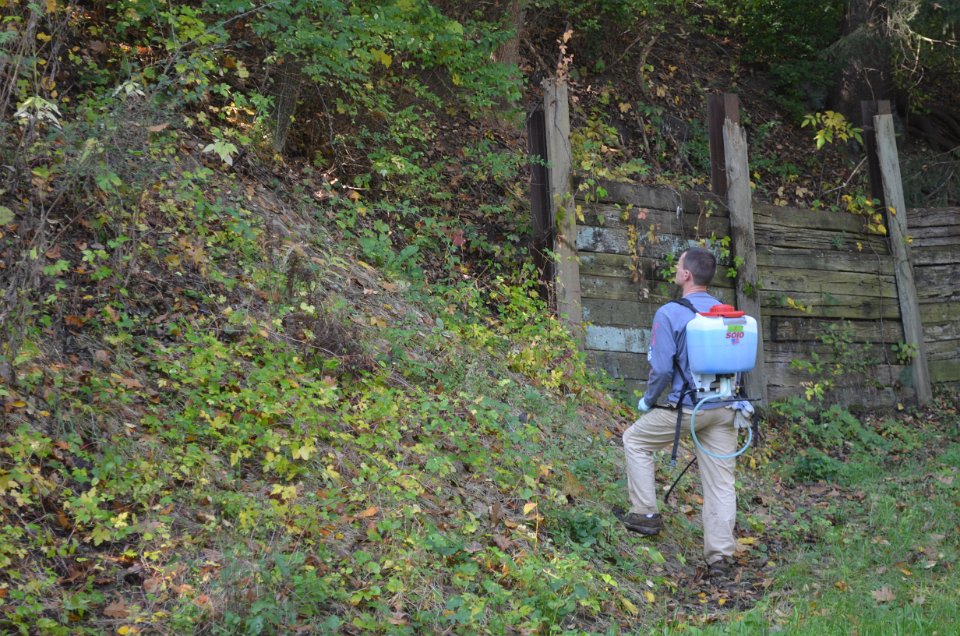
The National Oceanic and Atmospheric Administration (NOAA) awarded PCS a $800,000.00 grant that funded seasonal, part-time, temporary and/or full time positions. This team of workers focused on habitat restoration within the Maumee Area of Concern – primarily the Ottawa River and Swan Creek Watersheds, with the help of several partners like Metroparks Toledo, The Nature Conservancy, The University of Toledo, Boy Scouts of America, and City of Toledo. The Maumee Corps utilized a variety of restoration techniques, such as invasive species management within floodplain forest, wet prairie, and riparian habitat. The workers also focused on wetland restoration initiatives, re-planted areas devastated by the Emerald Ash Borer with suitable species, and stream bank planting. The grant ended in 2015 and the numbers speak for themselves. In total, 2,451 acres were treated (includes both acres restored and acres treated more than once), 925 acres were restored, and 37 workers collectively put in almost 38,000 hours.
Learn More
Project Informational Links: NOAA Maumee Corps Pictures and Maumee Corps Fact Sheet
Projects Funded by The Joyce Foundation (2008-2009)
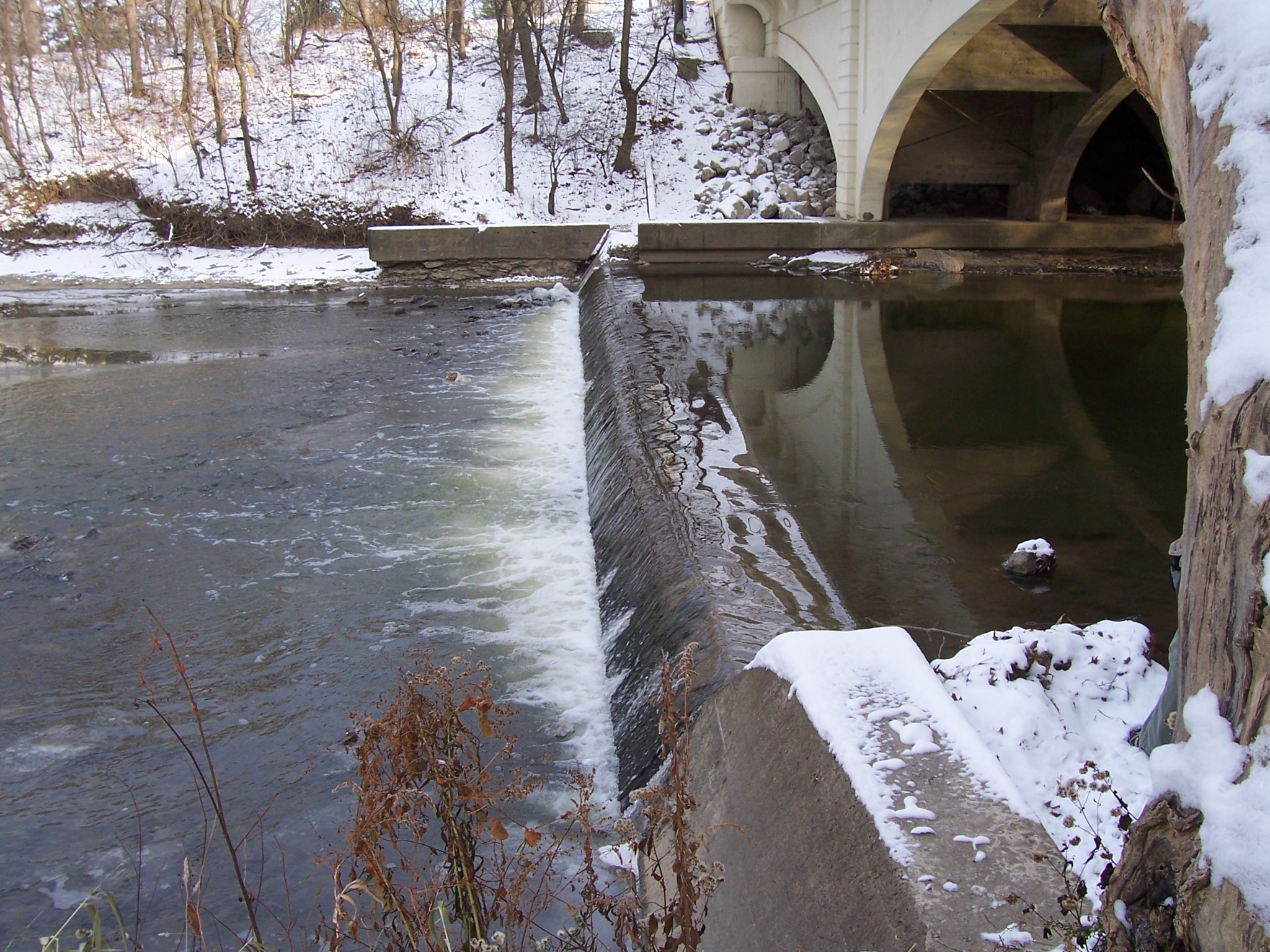
The Joyce Foundation grant was awarded to PCS to be used to implement three projects that improved the quality of the lower end of the Maumee River and Lake Erie, in terms of both water quality and ecosystem function. These projects – human health and ecological risk assessments for Duck and Otter creeks; preparing a pipeline of mitigation projects for Swan Creek and the Ottawa River; and decommissioning of the Highland Park Dam, not only had direct impact, but also represented and demonstrated solutions to the problems of urban and industrial areas within the western Great Lakes basin.
Learn more
Wetland and Riparian Inventory and Restoration Plans for Swan Creek & Ottawa River
This project identified and prioritized 15 potential wetland and/or riparian mitigation sites in both the Swan Creek and Ottawa River watersheds. These lists will be used to capture mitigation or penalty funds that become available.
Ecological and Human Health Risk Assessment for Duck and Otter Creeks
This project produced a human health and ecological risk assessments for Duck and Otter Creeks that could ultimately leverage significant funding from the Great Lakes Legacy Act. It also supported the Act by building the pipeline of actionable projects and demonstrating public demand for the funds available.
Highland Park Dam Decommissioning and Riparian Enhancement Project for Swan Creek
The Highland Park low-head dam prevented fish from spawning, trapped sediments, degraded water quality, but could not be removed. This project successfully demonstrated a new technology in dam mitigation that does not remove the dam, but decreases its impact by building structures into the stream bed to restore natural water movement. This now allows spawning fish to swim passed the dam, allows for sediment movement and allows for water to flow more naturally. This project was very successful in demonstrating how new technologies can restore a once degraded system to a thriving, more natural environment.
The Joyce Foundation funded these PCS projects in conjunction with a total investment of $5 million in the Maumee River watershed.
Give Water a Hand Educational Campaigns (2004-2006)
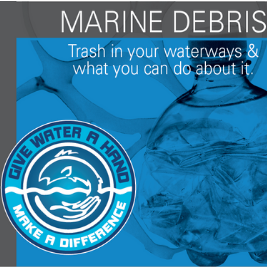
Give Water a Hand has been one of the most successful environmental awareness campaigns in northwest Ohio. Its success can be attributed to the highly collaborative team of people behind the effort. Over 20 communities and organizations partnered together to create the Give Water a Hand Residential Campaign. Many of those continued with the program as we created the Business Campaign, and new partners joined the program with the Watershed Awareness (stream signing) Campaign and the Storm Drain Marking Campaign. This program has received requests and compliments from organization in many states and the Residential Campaign was awarded an Honorable Mention in a national competition by the National Association of Regional Councils in June 2006 and the Ohio Environmental Education Fund’s 2006 Outstanding Environmental Education Project. The entire project was funded by the Ohio Environmental Education Fund, Local Jurisdictions and other partners. All materials are still available upon request.
Toussaint River Improvement Incentive Project (1997-2004)
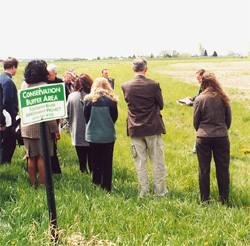
The Toussaint River Improvement Incentive Program was developed to reduce sediment and nutrient loadings into the Toussaint River and Lake Erie. As a part of Phase I (1997 – 2000), incentives were available to landowners along the 36-mile mainstem of the Toussaint River. Landowners made a five-year commitment to maintaining newly installed conservation practices. Twenty-seven miles of filter strips and 233 acres of floodplain were set-aside under Phase I. Phase I activities and events included the creation of two full-color booklets illustrating the success of the project, media/information events, and conservation buffer area signage. Water quality assessments of the river were made before practices were put into place and then again after they were established. As a part of the Phase I program, a streambank stabilization project was also conducted.
Learn more
Phase II began in 2000 and ran through 2004. This Phase provided financial incentives to landowners to establish filter strips along streams and in concentrated flow areas and set aside floodplain lands for all rivers, streams and ditches in the Toussaint River and Packer Creek watersheds. Forty-seven miles of filter strips were installed in Phase II. The project also included rebates for 106 homeowners who attended septic system education sessions and then properly pumped their systems.
Financing for Phase I was through a Ohio EPA 319 Grant with local match assistance from the Ohio DNR Division of Soil and Water Conservation and many other partners. Phase II was financed through a second Ohio EPA 319 Grant and many other partners. The Wood County Commissioners provided a bonus incentive payment to encourage landowner sign ups. This very successful program is highlighted as one of US EPA’s 319 success stories.
Fate of a River: Revisited (2001-2002)
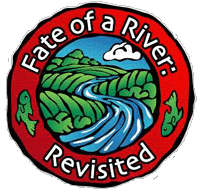
In 1965 a motivated, environmentally aware group of ladies from the Jr. League of Toledo produced a film, Fate of a River: Apathy or Action, depicting foaming detergents, raw sewage, green and blue industrial discharges, gasping fish, and algae-laden streams in the Maumee River Watershed. It was shown to more than 70,000 people in the late 1960s. This film helped citizens throughout Northwest Ohio recognize that their actions were negatively impacting local waterways and that they could take actions to reduce or eliminate this impact to restore the health of their waterways.
Learn more
After 30 years, Fate of a River: Apathy or Action was rediscovered in a University of Toledo Library closet in the mid-1990s. In 2001, three local groups partnered with WGTE-TV to highlight the many water quality improvements since 1965 by creating Fate of River: Revisited (Clearwater, Inc., Maumee RAP, Ottawa River Coalition). This was the most collaborative project with the longest credit list of any show WGTE-TV had made at that time. Fate of River: Revisited first aired on WGTE TV30 (Toledo) on Nov. 21, 2002; since then it has been aired multiple times on 12 television stations in 3 states and has been seen by over 100,000 people at presentations.
Fate of a River: Revisited, looks at the many water quality improvements over the 35 years since the first film was created. It demonstrates the need for continued actions by the citizens living in this three state watershed. Particular attention is paid to impacts associated with changes in land use and non-point sources as our population increases and shifts outside of the urban centers. A goal of the Fate of a River: Revisited campaign was to generate an increased understanding of water quality issues and motivate citizens to take actions to improve the waterways.
This project was funded by the Ohio Environmental Education Fund. The film was produced for public broadcast and mass distribution. Supplemental educational materials were developed to recreate awareness and to renew the focus on the Maumee River and its tributaries. For more information about the program watch this short video clip.
